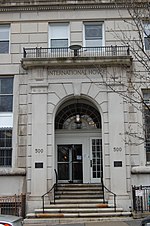Manhattan School of Music

The Manhattan School of Music (MSM) is a private music conservatory in New York City. The school offers bachelor's, master's, and doctoral degrees in the areas of classical and jazz performance and composition, as well as a bachelor's in musical theatre.Founded in 1917, the school is located on Claremont Avenue in the Morningside Heights neighborhood of New York City, adjacent to Broadway and West 122nd Street (Seminary Row). The MSM campus was originally the home to The Institute of Musical Art (which later became Juilliard) until Juilliard migrated to the Lincoln Center area of Midtown Manhattan. The property was originally owned by the Bloomingdale Insane Asylum until The Institute of Musical Art purchased it in 1910. The campus of Columbia University is close by, where it has been since 1895. Many of the students live in the school's residence hall, Andersen Hall.
Excerpt from the Wikipedia article Manhattan School of Music (License: CC BY-SA 3.0, Authors, Images).Manhattan School of Music
Claremont Avenue, New York Manhattan
Geographical coordinates (GPS) Address Website External links Nearby Places Show on map
Geographical coordinates (GPS)
| Latitude | Longitude |
|---|---|
| N 40.812222222222 ° | E -73.961388888889 ° |
Address
Manhattan School of Music
Claremont Avenue
10027 New York, Manhattan
New York, United States
Open on Google Maps





